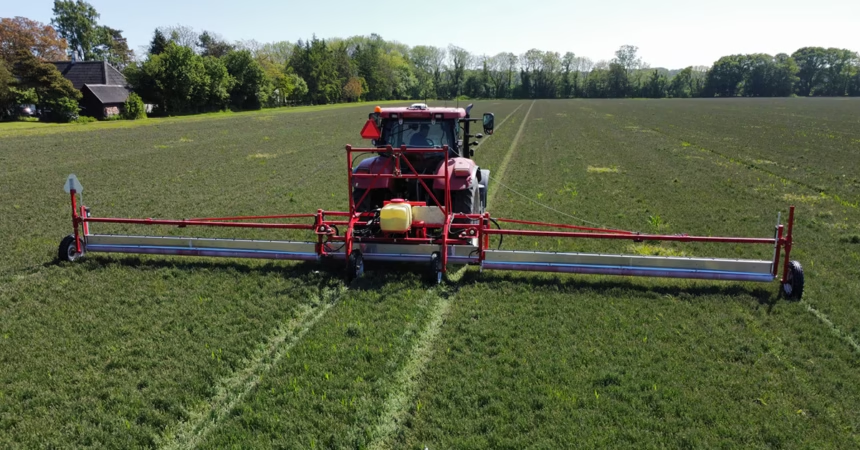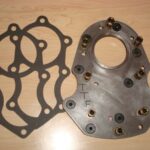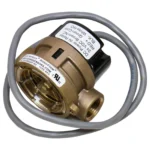Introduction to Weed Wipers
Weed wipers are becoming a go-to tool for farmers and gardeners looking to tackle pesky weeds without harming their crops. These innovative devices effectively target unwanted plants, allowing your desired flora to thrive. But like any piece of machinery, weed wipers require proper care to keep them functioning at peak performance.
Imagine having a trusty sidekick that helps you maintain your fields while saving time and effort. That’s what a well-maintained weed wiper can do for you! It’s not just about the initial investment; it’s about ensuring longevity and efficiency in every season.
In this guide, we’ll explore how to keep your weed wiper working smoothly so you can focus on what really matters—growing healthy plants and maximizing yields. Whether you’re new to using a weed wiper or have some experience under your belt, maintaining this essential tool is key to achieving the best results in your gardening or farming endeavors. Let’s dive into the essentials of keeping your equipment in top shape!
The Importance of Maintaining Your Weed Wiper
Maintaining your weed wiper is crucial for optimal performance. Regular upkeep ensures that the equipment functions efficiently, providing effective weed control.
A well-maintained weed wiper can significantly extend its lifespan. Neglecting minor repairs or maintenance tasks may lead to more significant issues down the line, resulting in costly replacements.
Additionally, proper care enhances precision in application. A clean and adjusted machine delivers herbicide evenly, targeting unwanted plants without harming desirable crops.
Regular checks help identify any wear and tear early on. This proactive approach minimizes downtime during critical periods of growth.
Investing time in maintenance not only protects your investment but also promotes sustainable farming practices. A reliable tool contributes to healthier fields and better yields over time.
Step by Step Guide for Maintaining Your Weed Wiper
Start by inspecting your weed wiper before each use. Check for any signs of wear or damage, especially on the fabric and frame. A simple visual assessment can save you from unexpected downtime.
Next, clean the wiping surface regularly. Use a soft brush to remove debris and dirt that may accumulate during operation. This ensures effective performance every time.
Lubricate moving parts as needed to prevent rusting. A few drops of oil on hinges and joints will keep everything running smooth.
Adjust the height settings based on crop size and weed type. Proper alignment enhances efficiency while reducing strain on the equipment.
Store your weed wiper in a dry place when not in use. Protect it from harsh weather conditions to prolong its lifespan significantly.
Common Problems and Solutions for Weed Wipers
Weed wipers are efficient tools, but they can encounter specific issues over time. One common problem is uneven application of herbicide. This often occurs due to blocked nozzles or worn-out wiper pads. Regularly check and clean the nozzles to ensure a consistent flow.
Another frequent issue is damage from rough terrain. If your wiper has visible dents or cracks, it may affect its performance. Inspect your equipment after each use and address any physical damage promptly.
Sometimes, users notice that their weed wiper isn’t picking up weeds effectively. This could be due to improper height adjustments or incorrect speed during operation. Make sure you adjust settings according to the type of vegetation you’re targeting for optimal results.
If there’s an unusual noise during operation, it might indicate mechanical failure within the motor or drive system. Conduct routine inspections and replace faulty components immediately before further complications arise.
Tips for Maximizing the Lifespan of Your Weed Wiper
To maximize the lifespan of your weed wiper, regular cleaning is essential. After each use, remove any debris and residue that might cling to the surfaces. A simple wash with water can make a significant difference.
Proper storage also plays a crucial role. Store your weed wiper in a dry area away from direct sunlight and extreme temperatures. This helps prevent deterioration of materials.
Inspect the parts frequently for signs of wear or damage. Addressing minor issues early can save you from costly repairs later on.
Using compatible herbicides is another way to extend its life span. Always refer to manufacturer recommendations regarding products that work best with your equipment.
Keeping up with regular maintenance schedules ensures peak performance throughout its working life while avoiding unnecessary breakdowns or replacements.
Environmental Considerations When Using a Weed Wiper
Using a weed wiper can be an effective way to manage unwanted vegetation while minimizing chemical usage. However, it’s essential to consider the environmental impact of your operations.
Always choose herbicides that are environmentally friendly and approved for use in your region. This helps protect beneficial plants and wildlife from harm.
Timing is crucial. Apply treatments during optimal weather conditions to avoid drift or runoff into water sources.
Be mindful of surrounding ecosystems. Maintain a buffer zone around sensitive areas like ponds or pollinator habitats to prevent unintended exposure.
Regular maintenance of your weed wiper ensures it operates efficiently, reducing waste and unnecessary applications. A well-maintained machine reduces excess herbicide use, contributing positively to sustainable practices.
Educate yourself on local regulations regarding pesticide application. Compliance safeguards both the environment and your farming practices against potential legal issues.
Conclusion: Proper Maintenance is Key to a Successful and Long-Lasting Weed Wiping Experience
Proper maintenance is essential for any equipment, and a weed wiper is no exception. Regular care directly impacts its efficiency and longevity.
By following the right maintenance procedures, you can ensure that your weed wiper performs at its best season after season. This not only saves you money on repairs but also enhances productivity in the field.
Pay attention to minor issues as they arise. Neglecting small problems can lead to bigger headaches down the line.
Invest time in cleaning and inspecting your device regularly. It pays off significantly when it comes to performance and durability.
Your commitment to upkeep will translate into effective weed control, allowing healthy crops to thrive while minimizing chemical use. Enjoy a smoother operation with fewer interruptions by keeping your equipment in top shape.
FAQs
Maintaining your weed wiper is essential for optimal performance and longevity. With proper care, you can ensure that your equipment remains effective in managing unwanted weeds. Here are some frequently asked questions to help clarify any uncertainties about maintaining your weed wiper.
What should I regularly check on my weed wiper?
Regular inspections of the hoses, nozzles, and fabric are crucial. Ensure there are no leaks or blockages. Examine the condition of the wicking material as well.
How often should I clean my weed wiper?
Cleaning after each use is recommended. This prevents buildup of debris and residue that could affect its efficiency over time.
What type of maintenance does a weed wiper require during off-seasons?
During periods when it’s not in use, store your weed wiper in a dry place away from direct sunlight. Inspect it periodically for signs of wear or damage.
Can I repair minor damages myself?
Yes, small tears or punctures can often be fixed with appropriate materials like adhesive patches designed for this purpose. However, major repairs may need professional assistance.
How do environmental factors impact my weed wiper’s lifespan?
Exposure to harsh weather conditions such as extreme heat or heavy rain can deteriorate components faster than normal wear and tear. Always store your equipment properly between uses to mitigate these effects.
By actively engaging with these tips and best practices, you’ll be better equipped to keep your weed wiper functioning optimally throughout its life cycle—a wise investment indeed!






